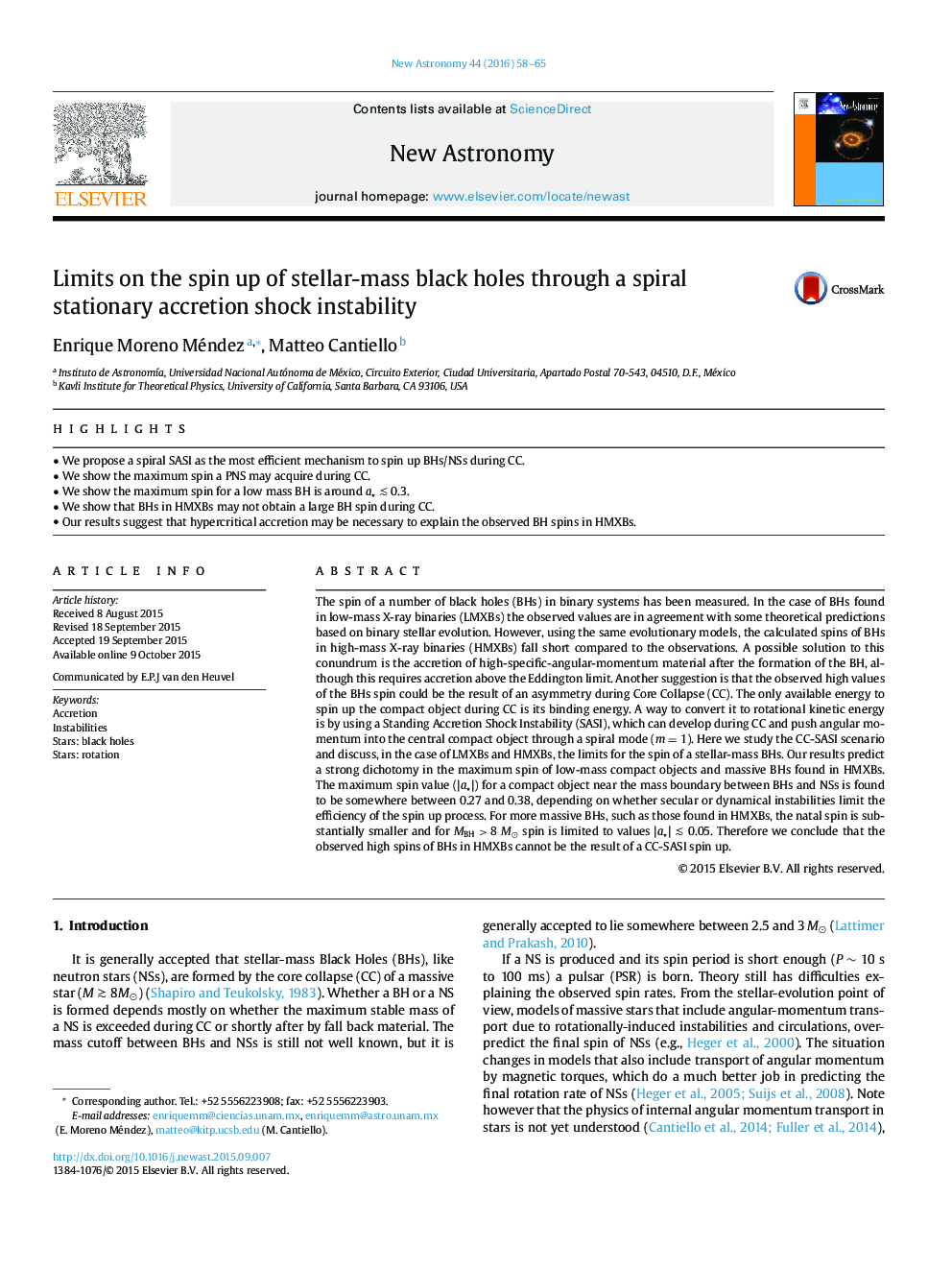| Article ID | Journal | Published Year | Pages | File Type |
|---|---|---|---|---|
| 1778819 | New Astronomy | 2016 | 8 Pages |
•We propose a spiral SASI as the most efficient mechanism to spin up BHs/NSs during CC.•We show the maximum spin a PNS may acquire during CC.•We show the maximum spin for a low mass BH is around a⋆ ≲ 0.3.•We show that BHs in HMXBs may not obtain a large BH spin during CC.•Our results suggest that hypercritical accretion may be necessary to explain the observed BH spins in HMXBs.
The spin of a number of black holes (BHs) in binary systems has been measured. In the case of BHs found in low-mass X-ray binaries (LMXBs) the observed values are in agreement with some theoretical predictions based on binary stellar evolution. However, using the same evolutionary models, the calculated spins of BHs in high-mass X-ray binaries (HMXBs) fall short compared to the observations. A possible solution to this conundrum is the accretion of high-specific-angular-momentum material after the formation of the BH, although this requires accretion above the Eddington limit. Another suggestion is that the observed high values of the BHs spin could be the result of an asymmetry during Core Collapse (CC). The only available energy to spin up the compact object during CC is its binding energy. A way to convert it to rotational kinetic energy is by using a Standing Accretion Shock Instability (SASI), which can develop during CC and push angular momentum into the central compact object through a spiral mode (m=1m=1). Here we study the CC-SASI scenario and discuss, in the case of LMXBs and HMXBs, the limits for the spin of a stellar-mass BHs. Our results predict a strong dichotomy in the maximum spin of low-mass compact objects and massive BHs found in HMXBs. The maximum spin value (|a⋆|) for a compact object near the mass boundary between BHs and NSs is found to be somewhere between 0.27 and 0.38, depending on whether secular or dynamical instabilities limit the efficiency of the spin up process. For more massive BHs, such as those found in HMXBs, the natal spin is substantially smaller and for MBH>8M⊙ spin is limited to values |a⋆| ≲ 0.05. Therefore we conclude that the observed high spins of BHs in HMXBs cannot be the result of a CC-SASI spin up.
